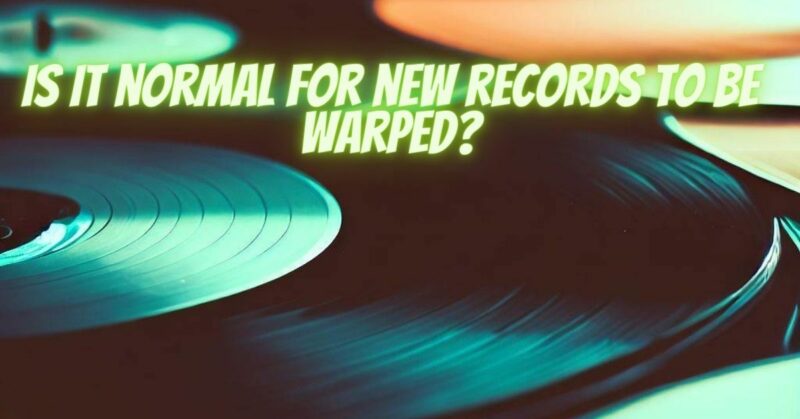The revival of vinyl records in recent years has sparked renewed interest in the analog sound experience. However, along with the joys of vinyl comes a common concern: Is it normal for new records to be warped? In this article, we’ll delve into the reasons behind record warping, whether it’s a typical occurrence, and what both collectors and newcomers should know about this phenomenon.
Understanding Vinyl Records and Warping
Vinyl records are known for their nostalgic sound quality and physicality. These circular discs are coated with grooves that, when played back using a turntable’s stylus, reproduce the recorded audio. However, despite their charm, vinyl records are susceptible to various imperfections, including warping.
Why Do Records Warp?
Warping occurs when a vinyl record’s flat surface becomes distorted, causing it to take on a slightly curved or uneven shape. Several factors contribute to record warping, including:
- Manufacturing Process: Vinyl records are manufactured by pressing heated vinyl between metal stampers. Sometimes, during cooling, the vinyl can contract unevenly, resulting in warping.
- Heat and Temperature Fluctuations: Exposure to heat, whether during manufacturing, shipping, or storage, can cause records to warp. Vinyl has a relatively low melting point, and extreme temperatures can lead to deformation.
- Storage Conditions: Records stored in environments with high temperatures, direct sunlight, or humidity are more prone to warping. Storing records vertically, without proper support, can also lead to deformation over time.
- Shipping and Handling: Rough handling during shipping can contribute to warping. If records are stacked improperly or exposed to pressure during transit, they might arrive warped.
Are Warped New Records Normal?
While warped records are not inherently normal, it’s important to recognize that some degree of warping can occur during the manufacturing and shipping processes. This is especially true for mass-produced records. However, whether a warped record is considered “normal” depends on the severity of the warp.
Minor warping, often referred to as “non-fill” warps, might be present on new records due to the factors mentioned earlier. These slight curves may not significantly affect playback quality and can sometimes be managed with proper turntable adjustments.
Significant warping, on the other hand, where the record visibly lifts off the turntable platter, is not considered normal and can severely impact sound quality. It’s advisable to return or exchange records with severe warping.
Preventing and Managing Warping
To minimize the risk of receiving warped records and managing the warping that does occur, consider the following steps:
- Purchase from Reputable Sources: Buy records from reputable record stores or online retailers known for quality packaging and shipping practices.
- Proper Storage: Store records vertically in a controlled environment, away from direct sunlight and extreme temperatures.
- Careful Handling: Handle records with care, supporting them from the center hole and the outer edge to avoid unnecessary pressure.
- Cooling and Flattening: If you have a slightly warped record, try the controlled heat method: place the record between two sheets of glass and expose it to sunlight or controlled heat for a short period. Consult professional advice before attempting this.
In conclusion, while minor warping on new records can be encountered due to various factors, significant warping is not considered a normal part of the vinyl experience. When purchasing records, it’s important to inspect them for any visible warping and to choose reputable sources. By taking preventive measures in storage, handling, and purchasing, you can enhance your vinyl collection and minimize the chances of encountering excessive warping issues.


